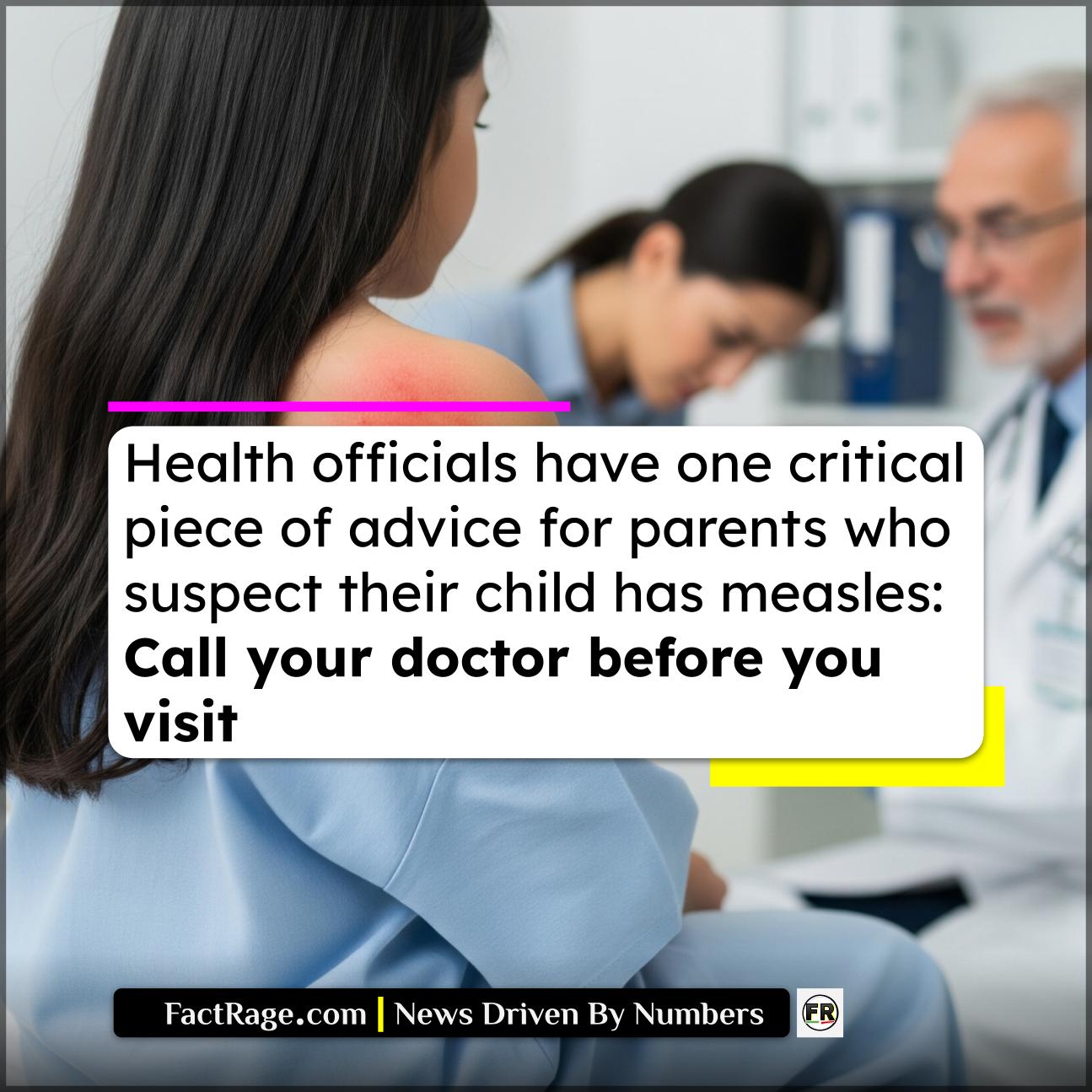NATIONWIDE – It’s a moment of quiet fear for any parent: a child with a high fever that won’t break, a persistent cough, and then, the first signs of a spreading rash. In that moment, the immediate questions are practical and urgent. What is this, and what do we do next?
- The Telltale Signs – Measles symptoms typically appear 7 to 14 days after exposure and can include a high fever, cough, runny nose, red watery eyes, and a rash that spreads from the face downward.
- The First and Most Important Step – Health officials across the country agree that if you suspect measles, you should call your healthcare provider or hospital before visiting to prevent exposing others in waiting rooms.
- A Growing National Concern – Over 1,200 cases of measles have been confirmed in 34 states and the District of Columbia this year, with 13% of individuals requiring hospitalization.
In communities grappling with new cases of measles, the advice from public health officials is becoming a crucial public service. Understanding why that first phone call is so important is the first step in understanding the nature of the virus itself.
The Two-Hour Virus
The guidance to call first is rooted in the unique science of how measles spreads. It is notoriously contagious, moving through direct person-to-person contact or simply through the air when an infected person coughs or sneezes. The virus can linger and remain infectious in a room for up to two hours after an infected person has left.
What makes containment even more challenging is that a person can be contagious for four days before the characteristic rash even appears. This creates a period where someone can spread the virus without anyone knowing they are sick, making public spaces like clinics and emergency rooms high-risk areas for transmission.
Who Is Most Vulnerable?
While vaccination has made measles rare for much of the population, the virus still poses a serious risk to the most vulnerable members of every community. According to health officials, this includes pregnant people, infants under one year old who are too young for the vaccine, and anyone with a weakened immune system.
These are the groups who are most likely to suffer from the serious complications measles can cause, such as ear infections, pneumonia, and in rare cases, brain swelling or death. It is for their protection that healthy individuals are urged to be vaccinated. Even in a state like Utah, where officials report more than 90% of residents have been vaccinated, the remaining unprotected population is still at risk.
A Spreading Reality: From Oregon to North Carolina
For a growing number of families, these are not hypothetical scenarios. In the last week alone, a series of unrelated cases have highlighted how the virus is re-emerging in communities across the country.
In Oregon, health officials confirmed the state’s first case of the year in an unvaccinated adult who had recently returned from international travel, potentially exposing others on a United Airlines flight and at a Safeway grocery store. In North Carolina, the first case was confirmed in a child visiting from another country where measles outbreaks have recently been reported.
Meanwhile, health officials in Grand Traverse County, Michigan, have declared a formal measles outbreak after three related cases were confirmed. And in Utah, three separate cases have been reported in two different counties, all among unvaccinated residents that officials say are not connected to each other. This isn’t one outbreak; it is a national pattern of multiple, simultaneous introductions of the virus into communities.
A Preventable Illness, a Shared Responsibility
The return of measles is a complex story, but the numbers reveal a simple truth. Of the more than 1,000 cases reported by May of this year, 96% were in individuals who were either unvaccinated or had an unknown vaccination status. The disease, which was declared “eliminated” in the U.S. over two decades ago, is now threatening that designation.
For health officials in states seeing new cases, the message is one of shared responsibility. “Getting vaccinated against measles continues to be the most important step we can take to protect ourselves and our loved ones,” said North Carolina Health and Human Services Secretary Dev Sangvai in a recent statement. It’s a sentiment echoed by his peers across the country, who frame the choice not just as a matter of personal health, but of community well-being.














